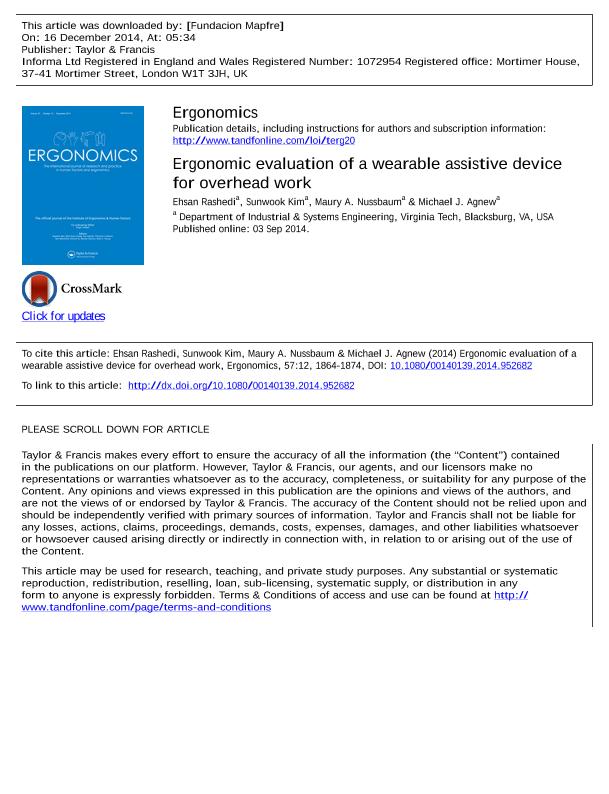Ergonomic evaluation of a wearable assistive device for overhead work

Contenido multimedia no disponible por derechos de autor o por acceso restringido. Contacte con la institución para más información.
| Tag | 1 | 2 | Valor |
|---|---|---|---|
| LDR | 00000cab a2200000 4500 | ||
| 001 | MAP20140047314 | ||
| 003 | MAP | ||
| 005 | 20141216165954.0 | ||
| 008 | 141216e20141201esp|||p |0|||b|spa d | ||
| 040 | $aMAP$bspa$dMAP | ||
| 084 | $a875 | ||
| 245 | 0 | 0 | $aErgonomic evaluation of a wearable assistive device for overhead work$cEhsan Rashedi...[et.al] |
| 520 | $aOverhead work is an important risk factor for upper extremity (UE) musculoskeletal disorders. We examined the potential of a mechanical arm and an exoskeletal vest as a wearable assistive device (WADE) for overhead work. Twelve participants completed 10 minutes of simulated, intermittent overhead work, using each of three payloads (1.1, 3.4 and 8.1 kg) and with/without the WADE. Ratings of perceived discomfort (RPDs) and electromyography (EMG) were obtained for the upper arms, shoulders and low back. Using the WADE, UE RPDs decreased by ~50% with the heavier payloads, whereas smaller (~25%) and non-significant increases in low-back RPDs were found and were relatively independent of payload. Changes in RPDs with WADE use were consistent with physical demands indicated by EMG, though EMG-based differences in fatigue were less apparent. Participants generally preferred using the WADE, particularly with heavier payloads. These results supported the potential utility of a WADE as an intervention for overhead work. | ||
| 773 | 0 | $wMAP20100019818$tErgonomics : the international journal of research and practice in human factors and ergonomics$dOxon [United Kingdom] : Taylor & Francis, 2010-$x0014-0139$g01/12/2014 Volumen 57 Número 12 - diciembre 2014 |

